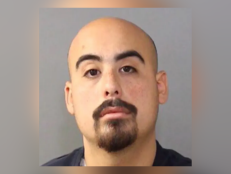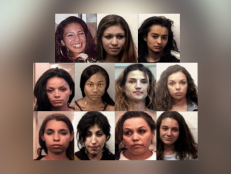Brandon Teena’s Legacy And The Devastating Hate Crime That Took His Life
After 21-year-old Brandon Teena reported being raped by two men, the rapists broke into the home he lived in and murdered him and two others.

Brandon Teena Obituary
On New Year’s Eve in 1993, Brandon Teena was murdered in a hate crime over his gender identity in Humboldt, Nebraska. The horrific crime brought attention to the violence and bigotry the trans community faces, especially after the Oscar-winning feature film Boys Don’t Cry and the moving documentary The Brandon Teena Story were made about Brandon.
Brandon was a transgender man who had a rough start in life. His father died before he was born, and he and his older sister Tammy were raised first by their maternal grandmother. When Brandon was three, his mom JoAnn Brandon came back into the picture and took custody of the children. During their childhood, Brandon and Tammy were sexually abused by an uncle for years.
Brandon decided to make a fresh start and moved to Falls City, Nebraska, in 1993. He moved into the home of Lisa Lambert and later started dating Lana Tisdel. There, he befriended ex-convicts John L. Lotter and Marvin Thomas "Tom" Nissen.
Lotter and Nissen didn’t initially realize that Brandon was transgender, and once they found out, they became obsessed with proving he had a vulva. On December 24, 1993, during a Christmas Eve party, they overpowered Brandon and forced his pants down. They also forced Tisdel, who already knew and accepted that Brandon was a trans man, to look.
Lotter and Nissen didn’t stop there. Hours later, they beat up Brandon and forced him to go with them in a car. They stopped the car and both raped Brandon, then took him back to Lotter’s place where they told him to shower. Brandon escaped through a bathroom window and fled to Tisdel’s house. Before he left, Lotter and Nissen threatened to silence him permanently if he reported the rape.
After encouragement from Lisa Tisdel and her mother, Brandon did report the rape. However, Falls City Sheriff Charles Laux didn’t arrest the rapists after Brandon bravely came forward.
Laux questioned Brandon in the cruelest, most insensitive way, seeming to get pleasure in making him relive his torture and rape. It was so horrific that Kimberly Peirce, the director of Boys Don’t Cry, called it “a third rape”, according to The Atlantic. Brandon’s mother later won a wrongful death suit against the sheriff. Donna Minkowitz reported, “The Nebraska Supreme Court found that Laux’s refusal to arrest Lotter and Nissen was what left them free to murder Brandon.”
After midnight on December 31, 1993, Lotter and Nissen broke into Lisa Lambert’s house. They first shot and then stabbed Brandon, killing him, and they then shot and killed Lisa Lambert. They also killed Phillip DeVine, a Black man who was dating Tisdel's sister and staying at Lambert’s home.
Lotter was sentenced to death after his convictions for the three murders. Nissen escaped the death penalty by striking a deal and confessing to being an accessory to the rape and murders, though he took full responsibility for the murders over a decade later.
Minkowitz, the reporter for The Village Voice who originally reported on the case and whose article was the basis for Boys Don’t Cry, wrote in a 2018 update about the case that she regretted some things in her original article. Now having learned about the complexities of being trans, she reported with greater sensitivity and apologized for not understanding trans people when she wrote her original article in 1994.
Mara Keisling, executive director at the National Center for Transgender Equality, told HuffPost Live, "It's not, I think, lost on most of us today that this was a white, trans, masculine-identified person, and that's still not the most common story about violence in our community. But it did become a focus of activism. There were a lot of folks from places like Transexual Menace and GenderPAC and others who went to Nebraska and then took that message and took that organizing to other places. And it was really a seminal moment in a lot of ways in our organized trans movement that still exists today."









